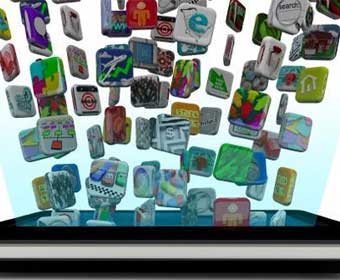Windows Phone 8 users get free wifi
US software firm Microsoft has given Windows Phone 8 users access to a sizeable global wifi network intended to improve the user experience and rein in data costs.
November 6, 2012

US software firm Microsoft has given Windows Phone 8 users access to a sizeable global wifi network intended to improve the user experience and rein in data costs.
Microsoft has licensed software from Californian wifi offload specialist Devicescape to give Windows Phone 8 users access to the company’s Curated Virtual Network (CVN). This is a global wifi network of over 11 million wifi hotspots, mostly in the US, which have passed a strict assessment of service quality.
Devicescape’s CVN leverages crowd-sourced data from the millions of devices already deployed. Any device with the software installed will automatically sniff out more suitable hotspots and add suitable connections to the network. Devicescape can then partner with operators to offer the service to end users on a variety of pricing plans, although many carriers offer the service for free.
According to Thomas Wehmeier, principal analyst at Informa Telecoms & Media, the Devicescape tool will work nicely alongside Datasense functionality included in Windows 8.
Datasense is a toolset, unfortunately not integrated into all Windows Phone 8 devices, that helps users manage their data usage. With compression and monitoring Microsoft estimates that users can squeeze up to 45 per more out of their data plan. Verizon will be the first carrier to activate Datasense on the Windows devices it sells.
Wehmeier believes the offering will go some way to rectifying the shock experienced by many users of Windows Phone 7, which made much use of live tiles that required a data connection and did not offer much by way of control over those connections.
With Datasense and Devicescape, Windows Phone 8 promises to be a much better experience, potentially putting users more frequently in range of free to use public wifi hotspots.
The move could also propel Devicescape, which so far has only had deals with Tier 2 carriers, into the big league.
“Mobile data caps, tiers and throttling are limiting the smartphone experience”, said Dave Fraser, CEO of Devicescape. “By leveraging the Devicescape network of public hotspots, Microsoft can now pass along tremendous value to its Windows Phone 8 users enabling them to locate a nearby quality wifi network. Windows Phone 8 users will now have an alternative way to manage their monthly data plan while maintaining the quality of service they are accustomed to from their mobile provider.”
At present, the sign-on-to-wifi experience is still manual, but this is largely due to poor integration between wifi and cellular. However, the 3GPP and wifi standards bodies are actively addressing this issue and the next phase is to move on to automatic hotspot sign on.
This week the Wireless Broadband Alliance (WBA) and the Small Cell Forum announced plans to work together to better integrate wifi hotspots and licensed small cells.
The two organizations will cooperate on a range of initiatives including simple measures such as looking at how small cells could impact the WBA and GSMA’s efforts to simplify Next Generation Hotspot (NGH) access, and sharing best practices for optimising the user experience and operator deployment strategies for joint wifi/small cell hotspots, building on the NGH program which is removing the need for usernames and passwords.
About the Author(s)
You May Also Like








.png?width=300&auto=webp&quality=80&disable=upscale)


_1.jpg?width=300&auto=webp&quality=80&disable=upscale)


.png?width=800&auto=webp&quality=80&disable=upscale)